GDF15 mediates the effects of metformin on body weight and energy balance
- PMID: 31875646
- PMCID: PMC7234839
- DOI: 10.1038/s41586-019-1911-y
GDF15 mediates the effects of metformin on body weight and energy balance
Erratum in
-
Publisher Correction: GDF15 mediates the effects of metformin on body weight and energy balance.Nature. 2020 Feb;578(7796):E24. doi: 10.1038/s41586-020-2031-4. Nature. 2020. PMID: 32051582
Abstract
Metformin, the world's most prescribed anti-diabetic drug, is also effective in preventing type 2 diabetes in people at high risk1,2. More than 60% of this effect is attributable to the ability of metformin to lower body weight in a sustained manner3. The molecular mechanisms by which metformin lowers body weight are unknown. Here we show-in two independent randomized controlled clinical trials-that metformin increases circulating levels of the peptide hormone growth/differentiation factor 15 (GDF15), which has been shown to reduce food intake and lower body weight through a brain-stem-restricted receptor. In wild-type mice, oral metformin increased circulating GDF15, with GDF15 expression increasing predominantly in the distal intestine and the kidney. Metformin prevented weight gain in response to a high-fat diet in wild-type mice but not in mice lacking GDF15 or its receptor GDNF family receptor α-like (GFRAL). In obese mice on a high-fat diet, the effects of metformin to reduce body weight were reversed by a GFRAL-antagonist antibody. Metformin had effects on both energy intake and energy expenditure that were dependent on GDF15, but retained its ability to lower circulating glucose levels in the absence of GDF15 activity. In summary, metformin elevates circulating levels of GDF15, which is necessary to obtain its beneficial effects on energy balance and body weight, major contributors to its action as a chemopreventive agent.
Conflict of interest statement
All other authors declare no competing financial interests.
Figures


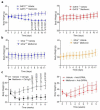



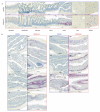

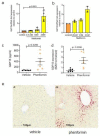

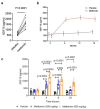
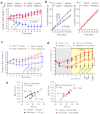


References
Publication types
MeSH terms
Substances
Grants and funding
- MC_UU_12012/1/MRC_/Medical Research Council/United Kingdom
- MC_UU_12012/3/MRC_/Medical Research Council/United Kingdom
- CZB/4/613/CSO_/Chief Scientist Office/United Kingdom
- 051420/WT_/Wellcome Trust/United Kingdom
- MC_UU_12012/2/MRC_/Medical Research Council/United Kingdom
- 200848/WT_/Wellcome Trust/United Kingdom
- MC_UU_00014/5/MRC_/Medical Research Council/United Kingdom
- MC_UU_00014/2/MRC_/Medical Research Council/United Kingdom
- RG/12/13/29853/BHF_/British Heart Foundation/United Kingdom
- UL1 TR000135/TR/NCATS NIH HHS/United States
- 100574/WT_/Wellcome Trust/United Kingdom
- MC_UU_00014/1/MRC_/Medical Research Council/United Kingdom
- 200848/Z/16/Z/WT_/Wellcome Trust/United Kingdom
- 100140/WT_/Wellcome Trust/United Kingdom
- MC_PC_12009/MRC_/Medical Research Council/United Kingdom
- G0802051/MRC_/Medical Research Council/United Kingdom
- MC_UU_12012/5/MRC_/Medical Research Council/United Kingdom
- G0400192/MRC_/Medical Research Council/United Kingdom
- MC_UU_12015/1/MRC_/Medical Research Council/United Kingdom
- 106262/WT_/Wellcome Trust/United Kingdom
- 107064/WT_/Wellcome Trust/United Kingdom
- R21 AG060139/AG/NIA NIH HHS/United States
- 095515/WT_/Wellcome Trust/United Kingdom
- G0600717/MRC_/Medical Research Council/United Kingdom
- NC/T2T0419/NC3RS_/National Centre for the Replacement, Refinement and Reduction of Animals in Research/United Kingdom
- T32 DK007352/DK/NIDDK NIH HHS/United States
- 106263/WT_/Wellcome Trust/United Kingdom
- MC_UU_00014/3/MRC_/Medical Research Council/United Kingdom
LinkOut - more resources
Full Text Sources
Other Literature Sources
Medical
Molecular Biology Databases

